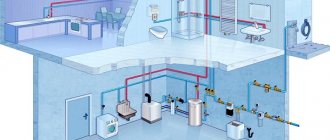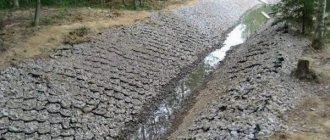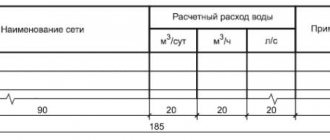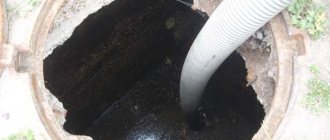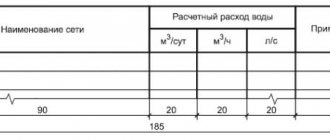Pipelines - underground and aboveground - are one of the most important communications of cities, farms, and enterprises. Water supply and water treatment systems, transportation of liquid media, heating, gas and oil pipelines - all these are pipeline assemblies. The smoothness of their operation, safety and cost of maintenance depend on how well they are implemented.
There is a set of rules and technologies for the construction of pipelines for various purposes, compliance with which is regulated at the highest level. The standards for specific projects directly depend on the assembly method, and there are several of them.
Necessary materials
Choosing pipe material is a very important task. If you do not approach it carefully enough, then in the future this will affect the performance of the pipeline. Most often, metals and polymers are used for their laying. Steel and cast iron perform well. High-quality copper also demonstrates high performance. This is what applies to metals. Among polymer materials, the choice is much wider: many types of polyethylene, polypropylene and so on. Pipes reinforced with fiberglass and aluminum are quite popular.
All of the presented materials have certain features, thanks to which they have become popular. In the domestic market, steel pipes for pipeline installation are most in demand. This is due to the low cost of materials. But it has a number of disadvantages: such pipes are susceptible to corrosion, require painting, and installation is difficult.
As mentioned above, copper pipes are also used in pipelines. This material has a long service life, but is also expensive. Copper pipes are resistant to corrosion, overgrowing of the cross-section, and can withstand high and low temperatures, as well as temperature changes. Such a pipeline will last a very long time, but the costs for it will be corresponding.
Among polymer materials, polypropylene is most often chosen. Such pipes are relatively cheap, yet have high performance characteristics and are durable.
There are two types of pipeline laying for external devices currently in use: open (digging up the ground) and closed (it is also called trenchless. It is implemented by punctures, punching, drilling or sinking. Let's consider them in more detail.
Technical standards for buried systems
The laying depth is specified in special rules - SNiPs. All the nuances of working with products made from various materials are spelled out there. The minimum depth is one and a half meters. In general, this level depends on the depth of soil freezing. The pipeline must be deepened below the ground permafrost level. In regions with a cold climate, the pipeline will have to be buried deeper, otherwise it will deform under the influence of low temperatures.
The nuances of proper installation of a water supply system are described in a special document: “State elemental estimate standards for construction work” (GESN).
In the middle zone, water supply pipes need to be laid 1.6 meters from the surface, then they will not freeze and bend in winter during severe frosts.
Open method of laying pipelines
Basically, the open method of laying pipelines is used in circumstances where the necessary equipment to implement a closed one is not available. Since this option is a compromise, it has a number of disadvantages: the need for large expenses, destruction of the landscape with its subsequent restoration, temporary suspension of the work of enterprises located in the work area, difficulty in moving, and so on.
The open method of laying pipelines and sewers consists of digging trenches of the required depth, followed by strengthening them and placing the pipes themselves. The task consists of several stages.
Stages of work:
- Digging a trench and leveling it;
- Strengthening the trench;
- Pillow filling;
- Pipeline laying;
- Covering pipes;
- Closing the trench;
- Restoration of the landscape of the territory or road surface.
Laying an open pipeline is associated with large costs and a large amount of work. Therefore, the closed method is most often used. It preserves the environment, is more economical, and does not interfere with the life of a populated area.
Closed technologies are widely used within cities, but are also used outside them. This method is used to lay communications under water structures, in nature reserves, as well as under reliefs in areas where it would not be possible to implement an open pipeline. These include swamps, ravines, canyons, and so on.
Factors to consider when calculating installation depth
As a rule, a pipe in the ground is affected by various destructive factors. These include:
- soil pressure;
- corrosion;
- stray currents.
These destructive factors must be taken into account when choosing material for future communication.
In addition to freezing, overheating of the pipeline structure, which can occur during the hot period of the year, is also undesirable. Let's consider the main factors on which the laying depth of a particular pipeline structure directly depends:
- temperature fluctuations in a particular region. Temperature indicators in summer and winter periods of the year;
- soil composition;
- vegetation in a specific area where the pipeline will be laid;
Note! The calculation results for each factor must be recorded with an accuracy of tenths.
- temperature of the working medium that will move along the pipeline line;
- the depth of water in the soil or its complete absence;
- the amount of precipitation falling in a specific region where the communication will be laid.
For proper installation of a pipeline structure in the soil, it is necessary to take into account each of the above factors. Today, thanks to the development of technology, their definition is not difficult.
Pipes laid underground sometimes require additional protection or insulation
Horizontal directional drilling
Closed pipeline laying is a high-tech process implemented through the use of drilling complexes. The section is devoted to a description of horizontal directional drilling (for more details: “Advantages of laying pipes using the HDD method - how the work is performed”). This is the best option for laying pipes in a closed way.
Horizontal directional drilling process:
- Drilling a pilot well. At this stage, navigation equipment is used to give it direction.
- Expansion of the well to the required size.
- Pipe laying.
A pilot well is also called an experimental well. Drilling it is the most important step in laying closed pipes. For this purpose, a drill head with an integrated emitter is used. It is attached to a flexible drive rod. Thanks to this, workers will be able to control the drilling process. In such a system there is a hole into which a special solution is supplied, which cools the installation, reduces friction and protects the well from destruction.
There is a transmitter in the drill head. It sends signals to the locator, and that’s how it is controlled. The primary responsibility lies with the operator. It adjusts the position of the head, controlling the entire drilling process. Its task is to prevent deviation in the well from the design trajectory. Horizontal directional drilling is a complex process with a high level of automation. To implement this method, precise planning and modern equipment are required.
What is needed for work, except pipes
When arranging a water supply system, not only the location and material of the lines are taken into account, but also additional equipment is used to ensure the safe operation of the plumbing equipment.
The devices are located in a separate distribution box equipped with a removable or hinged door. The volume of the cabinet provides the owner with unhindered access to components for maintenance or repair.
Shut-off valves
The main ball-type valve, located next to the riser, separates internal networks from external ones and allows you to turn off the water in the apartment during repairs.
The unit operates in 2 extreme positions; intermediate positions are not required. Since the water supply ball valve experiences increased loads and must ensure a hermetically sealed channel, the home owner is recommended to purchase products from Valtec or Bugatti.
Shut-off valves for water supply pipes.
Emergency equipment
Emergency shut-off devices allow you to shut off the liquid supply in case of leaks without owner intervention. A standard mechanical blocker is designed for a certain volume of fluid flow.
If the parameter is exceeded, the product blocks the channel (for example, similar devices are used in washing machines). Electromechanical units are connected to a household AC network and equipped with sensors that detect the presence of liquid on the floor. After the sensor is triggered, the motor is turned on, turning the ball axle box of the crane.
Assistive devices
Additional devices are installed in the distribution cabinet:
- Pointer or digital pressure gauges that allow you to determine the pressure and record peak values. The products are placed at the inlet and after the regulator or after the filter block (to determine the pressure drop coefficient, which indirectly indicates the condition of the cartridges). Pressure gauges are mounted on separate tees. There are schemes with devices integrated into the filter or with pre-mounted threaded fittings.
- Distribution blocks required when constructing a collector water supply system. The housings are equipped with fittings for connecting to the riser and fastening the outlet lines. When installing the comb, it is necessary to consider the location of the outlet pipes with ball-type valves. The distributor housing has fittings for attaching additional equipment (for example, circuit breakers or pressure sensors).
Filters for water purification
The water supplied to the premises contains foreign mechanical impurities that damage plumbing equipment. A coarse filter with a metal mesh separates particles up to 100 microns in size.
Collected garbage is periodically removed manually. To clean the filter, you need to close the ball valve of the water supply, and then unscrew the lower part of the housing. There are water filters with a drainage channel to drain contaminants into the sewer.
For further cleaning, filters with a filler made of nylon or polypropylene fiber, capable of trapping particles with a size of 5 microns or more, are used.
As the filter becomes dirty, the throughput deteriorates; the owner must replace the cartridge (the service life depends on the quality of the water).
Complex cleaning systems use special blocks with permanent magnets, which make it possible to transfer impurities into a suspended state with subsequent capture by synthetic filter media.
Installation of cleaning filters.
Related material: The best flow-through water purification filters for installation under the sink
Regulators
The pressure regulator allows you to reduce the pressure in the water supply lines to the required value (for example, for plumbing to operate, a pressure of 3-4 atm is required).
The device reduces the risk of hot liquid mixing and protects equipment from water hammer. Some owners install additional load absorbers with a piston or membrane module.
The control units contain mechanical valves that prevent backflow (for example, dehydration of an electric boiler leads to equipment damage).
Water consumption meters
The installation location and type of water meters are determined taking into account the requirements of the management company. The equipment should be located at the entrance to the room in a cabinet that provides readings and servicing of the devices.
Products can be installed horizontally or vertically. There are combined type meters. During installation, the permissible water temperature is taken into account.
The installation kit for the meter is equipped with a dirt filter and a check valve that prevents the flow from spinning the rotor back.
In houses, meters with a mechanical principle of operation are used. The information is recorded by the owner. There are models with an electronic unit that automatically transmits data to the service organization.
The rules for installing seals or locating metering devices are established by the sales company.
For example, some organizations do not provide for the use of seals, others do not allow meters to be mounted next to ball valves or filters with flushing fittings. It is necessary to clarify in advance the requirements, which indicate how to properly install metering devices.
Water meters.
Directional puncture
The directional puncture method involves the use of pneumatic punches for drilling wells. They then tighten pipes whose diameter does not exceed 400 mm. The pneumatic punch has a cylindrical body. It contains the firing pin and the air distribution system. Compressed air is released onto the body, and then blows are applied, so it moves.
The key feature of the puncture method is the speed of its implementation due to the speed of the punch. In addition, they compact from each other to a small extent. The benefits are greatest when several pipelines are laid nearby or close to infrastructure.
Water heater connection diagram
The heater can be installed in any room that is protected from temperature drops below 0° C, so that future maintenance work can be carried out.
The assembly location must be chosen rationally so that the installation is not interfered with by household appliances, hot water pipes and electrical wires. To avoid energy loss, all hot hydraulics must be carefully insulated.
When choosing an installation location, you need to take into account the space required to operate and replace the protective magnesium anode, as well as the weight of the filled heater.
Heater components:
- hot water pipe;
- magnesium anode;
- a heating element;
- thermal insulation (polyurethane foam);
- enamel tank;
- control Panel;
- hot water connection;
- connector for connecting cold water;
- bottom cover of the case.
How to install
The heater must be connected to a water supply network with a pressure of no more than 0.6 MPa, and the minimum pressure cannot be lower than 0.1 MPa (about 1 bar). A safety check valve must be installed on the cold water supply pipe.
The valve must not be mounted directly above the heater. The outlet of the safety valve must remain open, that is, connected to the atmosphere.
There must be no device (eg safety device) between the safety valve and the heater. At the same time, a tee is allowed, on which there is a drain valve that allows emptying the tank.
If the pressure in the water supply network exceeds 0.6 MPa, it is necessary to reduce it by adjusting the valve.
Heater installation
The heater must be installed by qualified personnel, who must ensure free access to the device in case of further maintenance or quick replacement.
A device with a large tank capacity can provide several water collection points. Do not bend the connecting pipes on the housing. This may damage the anti-corrosion protection of the enameled tank.
Connection to the AC mains is only possible using a socket type P. -0 / 230V / 16 A (socket with grounding contact).
First start
After installing the water heater, you need to fill it with water. After filling, the tightness and quality of fastening are checked.
If necessary, tighten all screws thoroughly. If there are no leaks, the heater can be connected to the network by inserting the plug into the outlet.
Use the thermostat knob to set the desired water temperature. The red color of the indicator indicates energy consumption and the start of heating.
Turning off the heater
To turn off the water heater, you need to remove the plug from the socket. If a shutdown occurs in winter, the water in the heater may freeze and must be drained.
Heater serviceability
To keep the heater in good condition, it is necessary to descale the tank at least twice a year.
If appropriate chemicals or acids are not available for this task, you can try to crush the scale layer manually (be careful not to damage the inside of the tank).
Punching method
The punching method is intended for laying metal pipes of large diameter (from 800 mm). And one of its main features is the absence of the need to dig a trench. This method is used for pipelines no longer than 80 meters. The essence of the method is that hydraulic jacks press a steel case with a knife at the end into the ground. It pours into the pipes, then they must be cleaned manually.
This method is widely used when laying pipelines under various structures, highways and rails. It is also involved in the construction of water, oil and gas pipelines, and the installation of sewers. In addition to the fact that large diameter pipes can be used in this way, there are other advantages: relatively low costs and speed of work.
Nuances for different types of bathrooms
In apartment buildings there are several types of bathrooms:
- separate, in which there is a concrete wall between the bathroom and the toilet;
- combined, without internal partitions (some owners dismantle them, further increasing the area of the room).
Combined
In such a bathroom, the water supply lines are routed along the wall along the perimeter of the room from the riser through cut channels. Couplings are provided at consumer connection points.
Ball valves are placed in a shield or covered with a box. After laying the mains, the channels in the wall are sealed with a cement mixture, and finishing material (for example, tiles) is installed on top.
Perimeter wiring in a combined bathroom.
Separated
When wiring in a separate bathroom, a hole is cut in the wall necessary for supplying a sewer drain or water supply to the riser.
The lines for supplying liquid to consumers are located inside the walls.
If necessary, provide an additional connection point for a washing machine, heating radiator or heated towel rail (the coil on the wall is heated by circulating hot water).
Wiring in a separate bathroom.
Auger drilling
There is a way to lay pipelines using special equipment - auger drilling machines. In this case, drilling goes into the receiving pit from the working pit. This means there is no need to go to the surface. This method is suitable for laying closed pipelines up to one hundred meters from steel, concrete or polymer pipes (100 - 1700 mm in diameter). It is highly accurate, the maximum deviation will not exceed 30 mm. The pipeline itself will be smooth, without sagging. This method is often used when installing gravity sewers, when laying pipes under railway tracks or in the communications area of houses.
How to create a project yourself?
In order to properly plan the plumbing system, you must first draw up a house plan, placing in it all the plumbing fixtures and equipment that will be connected to the water supply.
All dimensions are indicated on the same scale, according to actual measurements of the premises. The more accurately the plan is drawn up, the more accurately it will be possible to determine the required amount of materials and components.
The water supply diagram should reflect as accurately as possible all water intake points, the length and location of pipes for transporting water, and even sewerage, since these communications are often located nearby. The number of filters, boiler volume, and pumping equipment parameters are also taken into account.
The wiring diagram must be simplified as much as possible, trying to avoid crossing pipes. Water pipes are located closer to sewer pipes in order to hide them with a common duct. When placing pipes under the floor, the outlet of the tees is positioned straight up
The project must take into account the requirements of building regulations, as well as the rules of water supply and sanitation approved and in force in the country.
Installation of internal pipelines
SNiP 3.05.01-85 regulates the installation of internal pipelines. The document also applies to water supply systems, climate control equipment, heating, drains and similar communications.
Basic operating principles
If you plan to implement a pipeline with a diameter of no more than 50 mm, then steel pipes are used. In other cases, cast iron is more suitable. The water supply should be located at a distance of one and a half meters from other communications. If it passes through the wall of a building, it must be protected from possible precipitation. Main water pipelines in buildings with large human traffic are carried out in the basements; in industrial facilities they are placed on the technical floor or in the attic.
List of documents
Waiting for us:
- SP 31.13330.2012. He will tell us how the installation of external water supply pipes should be carried out. This set of rules is a revised version of the Soviet SNiP 2.04.02-84 taking into account the current market for materials and fittings;
Rulebook cover
- A manual for the notorious SNiP, released in 1989 , and describing the features of installing external water pipelines in difficult geological and engineering conditions;
- SP 30.13330.2016 . It contains standards for laying water supply pipelines for buildings and structures.
Let's start studying the documents. For the convenience of the reader and to reduce the volume of information, we will touch only on those points that in one way or another directly affect the installation of pressure water pipes.
Conclusions and useful video on the topic
Experience in arranging water supply and sewerage systems in a private home:
In the process of constructing or repairing water supply and sewer networks, it is necessary to be guided by rules, norms, and standards. Compliance with technological recommendations, adherence to standards and norms is the key to building effective and durable communications.
Do you have experience in installing internal water supply or sewer networks? Please share information with our readers, tell us about the features of highway planning. You can leave comments in the form below.
Application of check valve
This mechanism belongs to the safe operation system. Its use on a pressure device is necessary.
When heated, the water in the boiler noticeably increases its volume, resulting in an increase in pressure in the vessel. The extreme manifestation of this process is its rupture. As a result, the room is filled with steam and hot water, which can cause significant harm to people.
When critical values are reached, the valve installed on the boiler opens the spring damper to discharge water, which is discharged through the fitting.
It must be securely fastened, since the discharge can be carried out with great pressure. After releasing excess water, the spring valve closes. The valve also has a lever for releasing water, which can be used manually.
Calculation of water supply networks
The main requirement for the calculation of domestic, industrial and fire-fighting water supply systems is to ensure the standard water pressure in the devices. The calculation is based on the maximum water flow per second. If the system has 2 inputs, then each of them is designed to function fully when the second is disconnected. With multiple injections - 50% fluid consumption.
The standard speed of water movement in a cold water pipeline is 3 m/s. The diameter of the pipes is selected to ensure maximum pressure supplied from the external network. For hot water pipelines, the pressure losses occurring in the supply and circulation lines for each branch of the system should not differ by more than 10%. The diameter of the circulation risers is selected in accordance with the requirements of SNiP.
Attention. Constant water pressure in the pipes, allowing it to flow out of taps, mixers and waste tanks - 2 m,
General Installation Tips
If your apartment is undergoing renovations, you can entrust the installation of the unit to professionals. Otherwise, if you are planning to perform this procedure yourself, you can use the tips below:
- If the renovation in the apartment was carried out a long time ago, before installation you should invite a specialist who will diagnose the wiring in the apartment.
- The wall serving as the installation site for the boiler must withstand a load twice the weight of the device.
- Access to the device must be free in case repairs are required.
- A sufficient analysis of the pipeline in the home is of no small importance. More precisely, the quality of pipes and risers, as well as the availability of outlets for directly connecting the unit, installing taps and other necessary manipulations. If the condition of the risers leaves much to be desired, it is necessary to first replace them and carry out repairs, otherwise the adequate operation of the water heater may be in question.
Installing a storage water heater in your own apartment is possible with your own hands. The most important thing here is compliance with safety precautions, as well as compliance with all installation rules.



